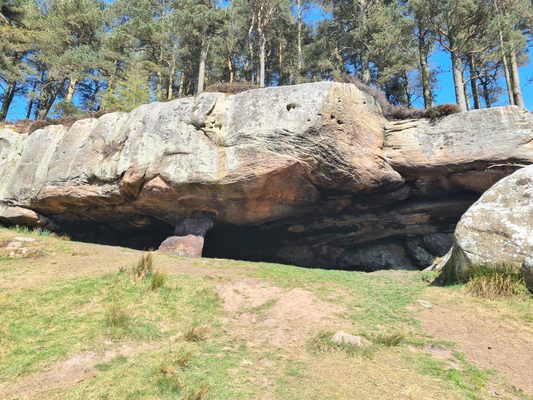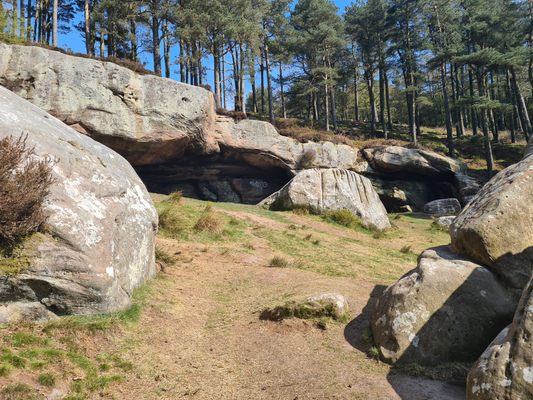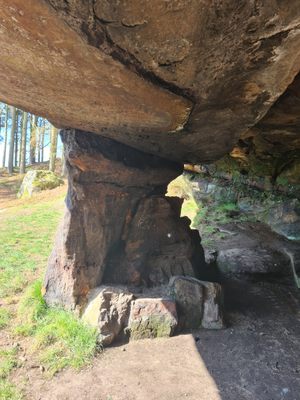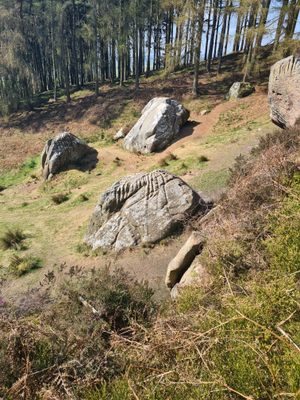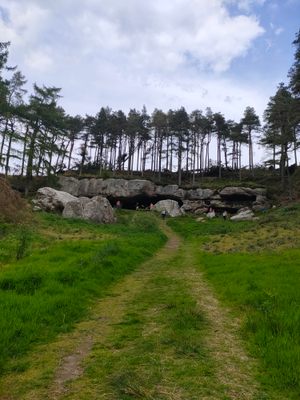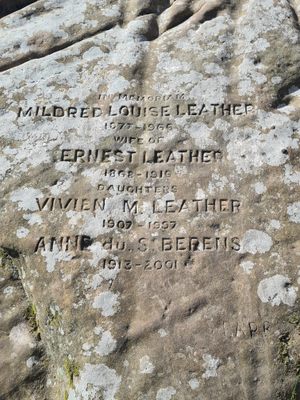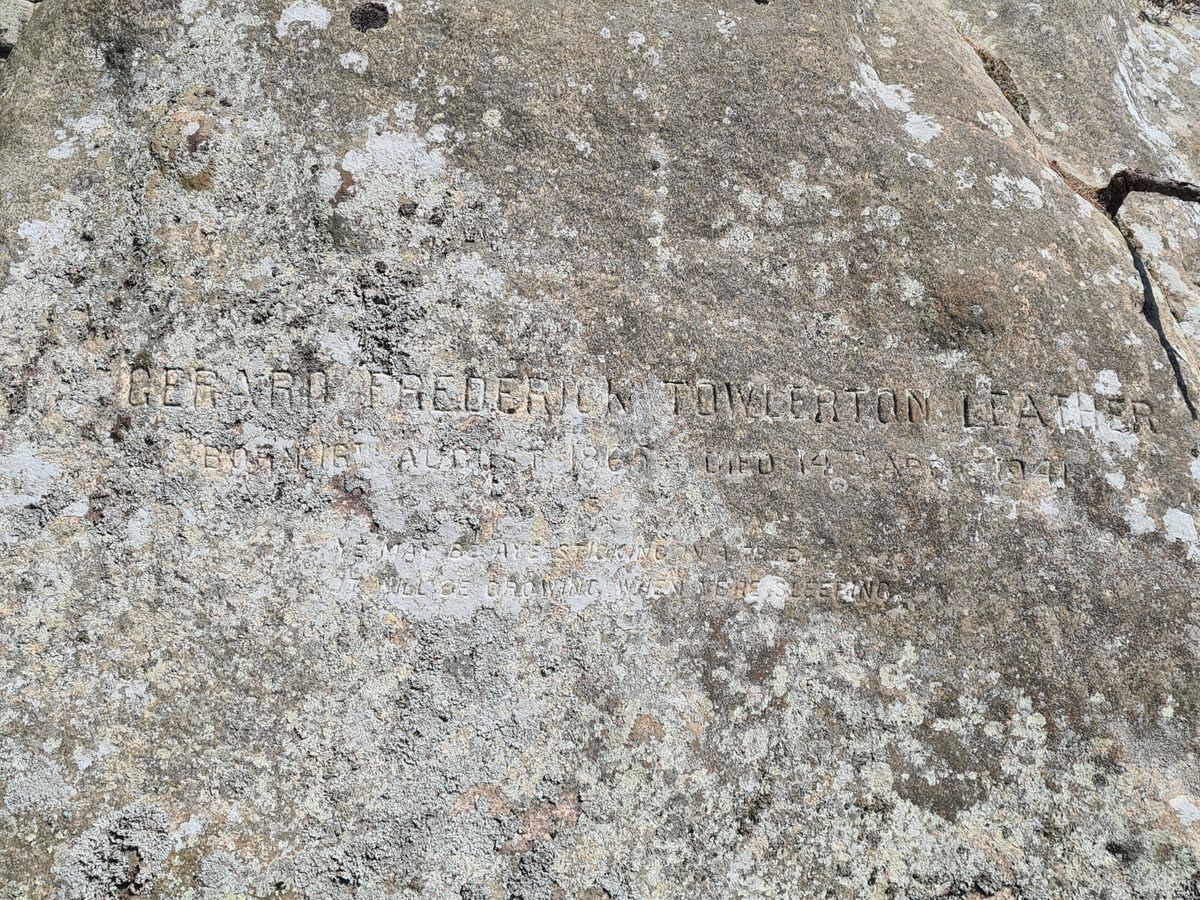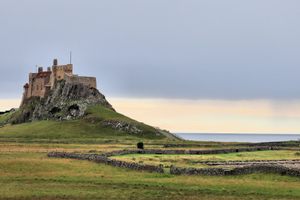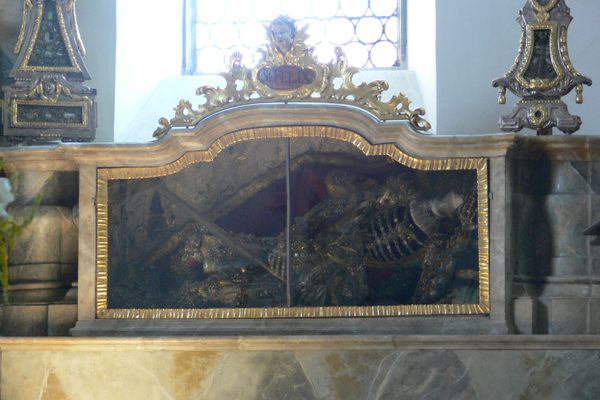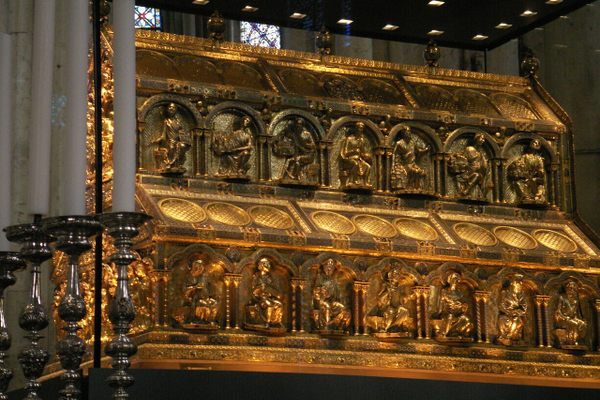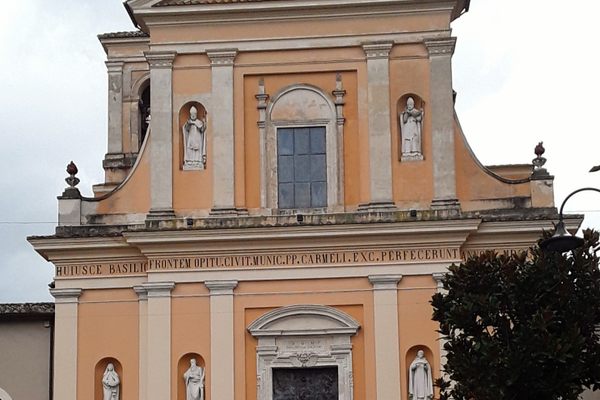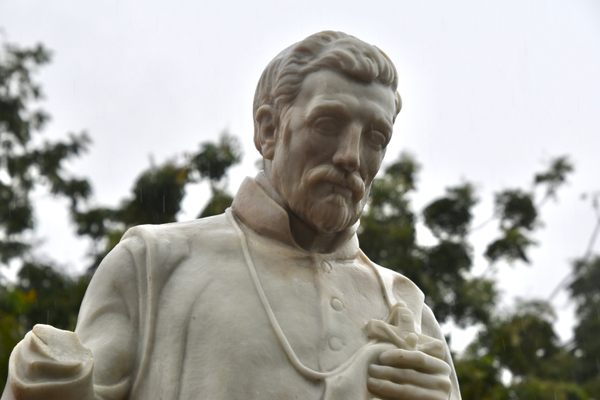About
This sandstone cave is formed from a large overhanging rock, which is supported by a single, natural rock pillar almost in the middle of the cave. The cave itself is large enough to provide shelter for a small group of people.
According to the legend, this cave might have been among the many places where the monks escaping Danish invaders either took shelter while transporting their most holy relic (St. Cuthbert's body) or where Cuthbert himself may have spent time living as an anchorite hermit before moving to the Farne Islands. These stories may not be mutually exclusive—the monks might have sought refuge here while escaping with the saint's body because the cave had prior links to Cuthbert as he had already spent time living here as a hermit.
Interestingly, there are actually two St Cuthbert's Caves in Northumberland. (The other can be found at Doddington.) To add to the confusion, both share the same story. Given that the monks carried St. Cuthbert's body around northeast England for so long before settling down in one location, it is possible that they may have used both caves at different times.
After wandering with the saint's body for a time, the monks settled at Chester-le-Street, and this was where the saint's body stayed for 110 years. A fresh series of Danish raids in 995 caused the monks to set off on their wanderings again, this time they carried Cuthbert's coffin to Ripon. However, two months later they were on the road again.
This time the wagon carrying the saint's coffin became stuck in the mud east of where Durham City is now located. According to the legend, Cuthbert appeared to the monks after they prayed to him for help and informed them that he wished to be laid to rest at "Dunholme", a place where a dun cow rested. The monks found this place, upon a high bluff above the River Wear, and this is where they built what would become Durham Cathedral.
At some point in the mid-19th century, the entrance to the cave was enclosed by a stone wall and it spent time been used as a lambing shed. The area around the cave was also once owned by the Leather family, and the area became the family burial place for a while, being designated consecrated ground in 1936. Memorials to different members of the family can be seen carved into some of the sandstone boulders standing in front of the cave.
Related Tags
Know Before You Go
The cave and surrounding area is maintained by the National Trust, there is a small free car park a short walk down hill from the cave site, which is located on a minor road midway between the B6353 and the B6349.
From the parking area the trail leads up a slope through a field before angling north-east across the hillside along St Cuthbert's Way to a forest plantation.
Published
June 14, 2021
